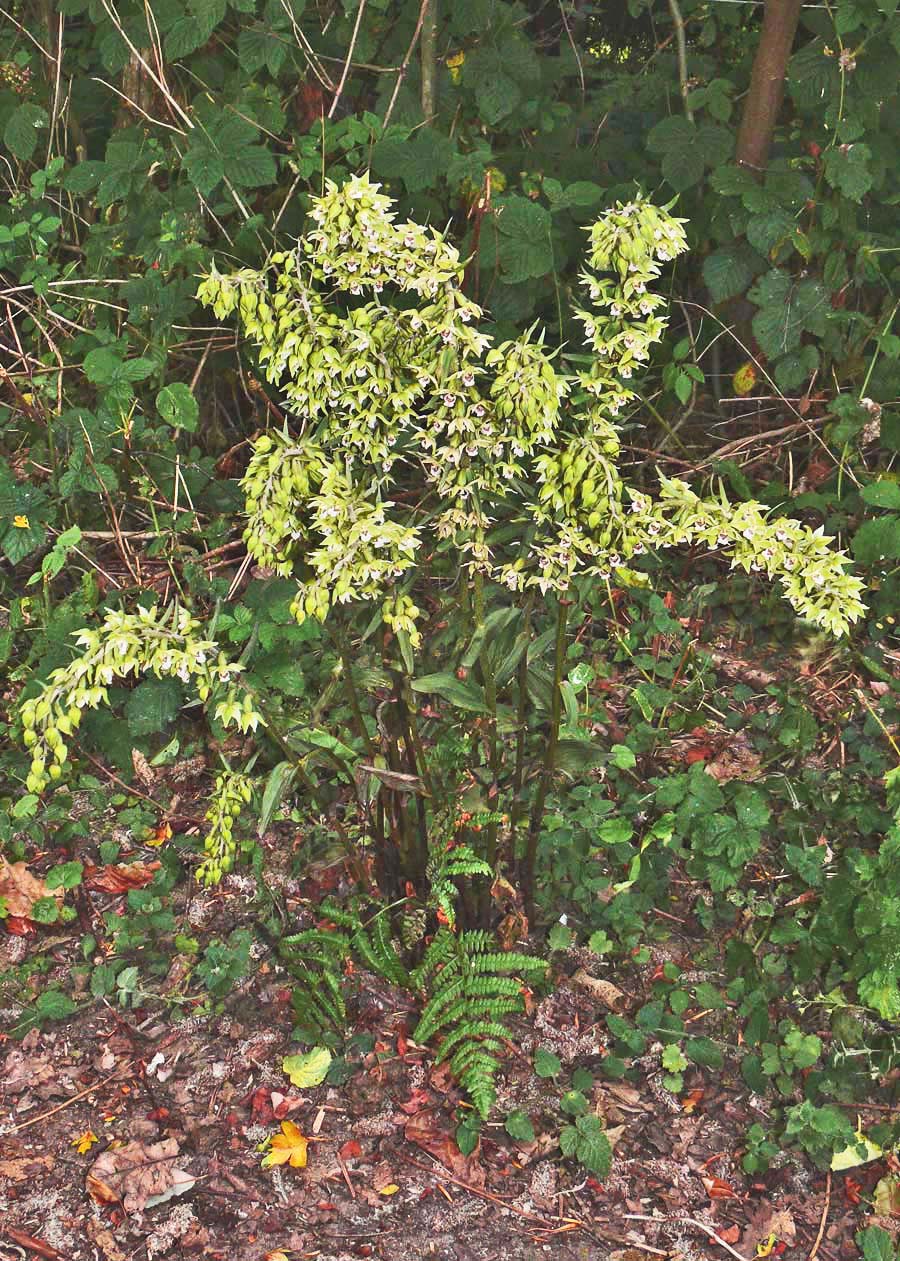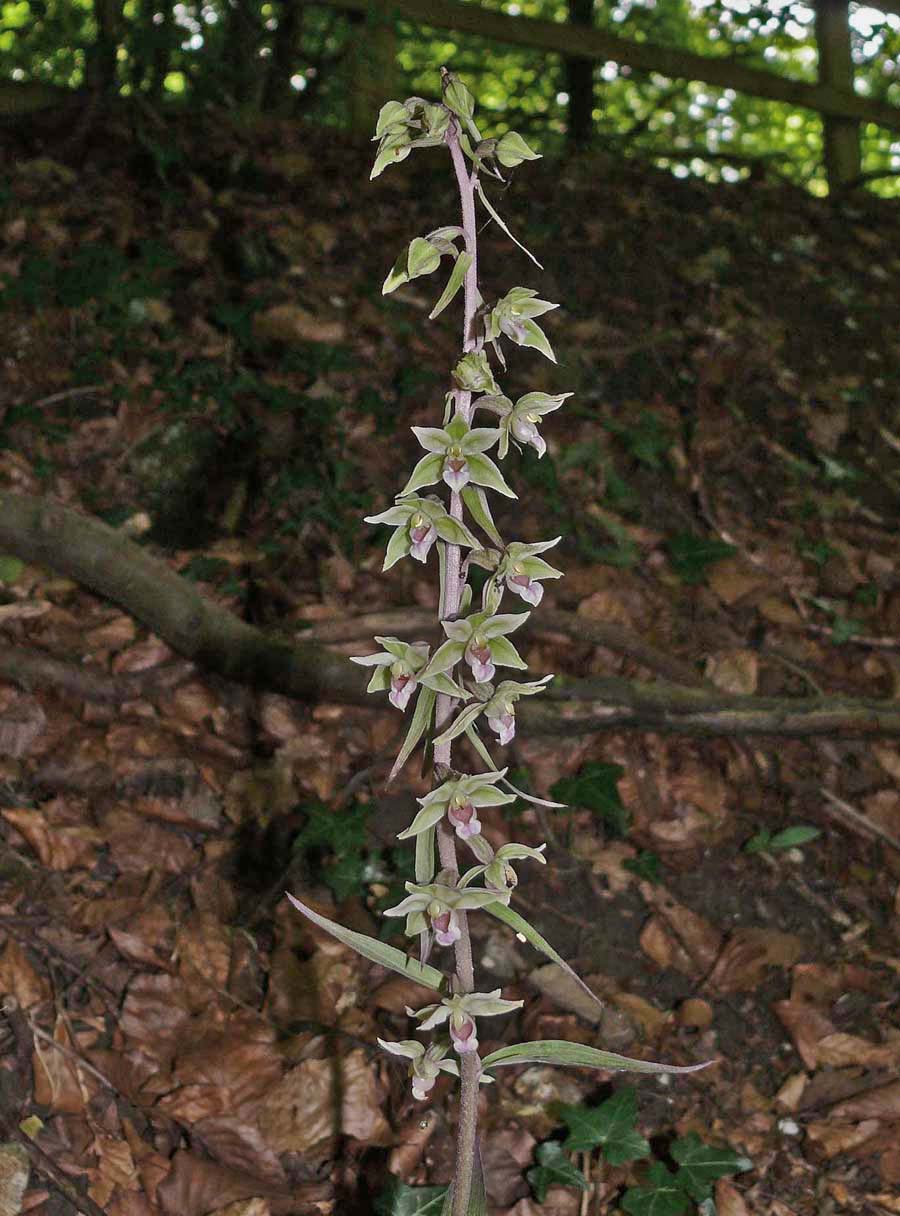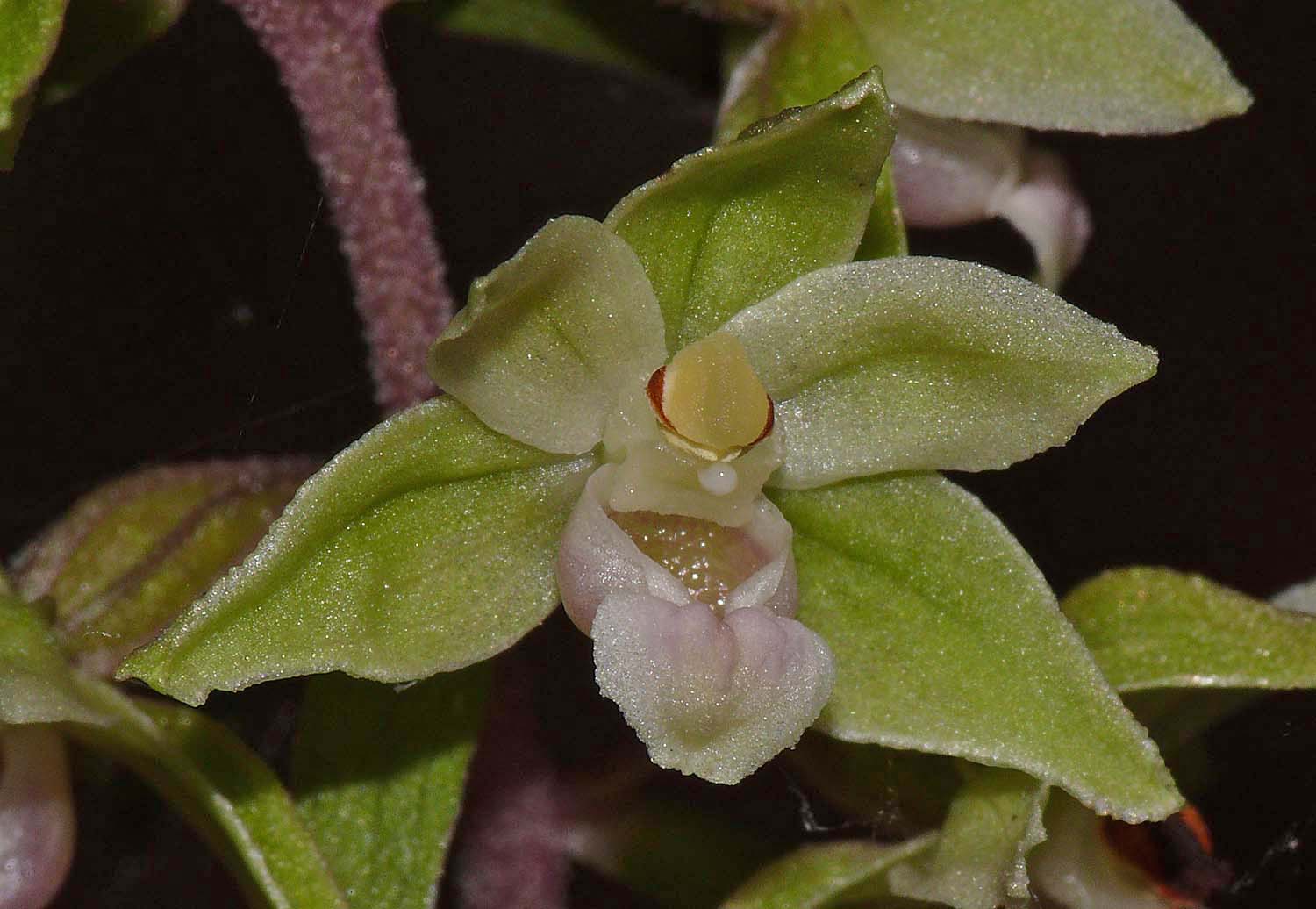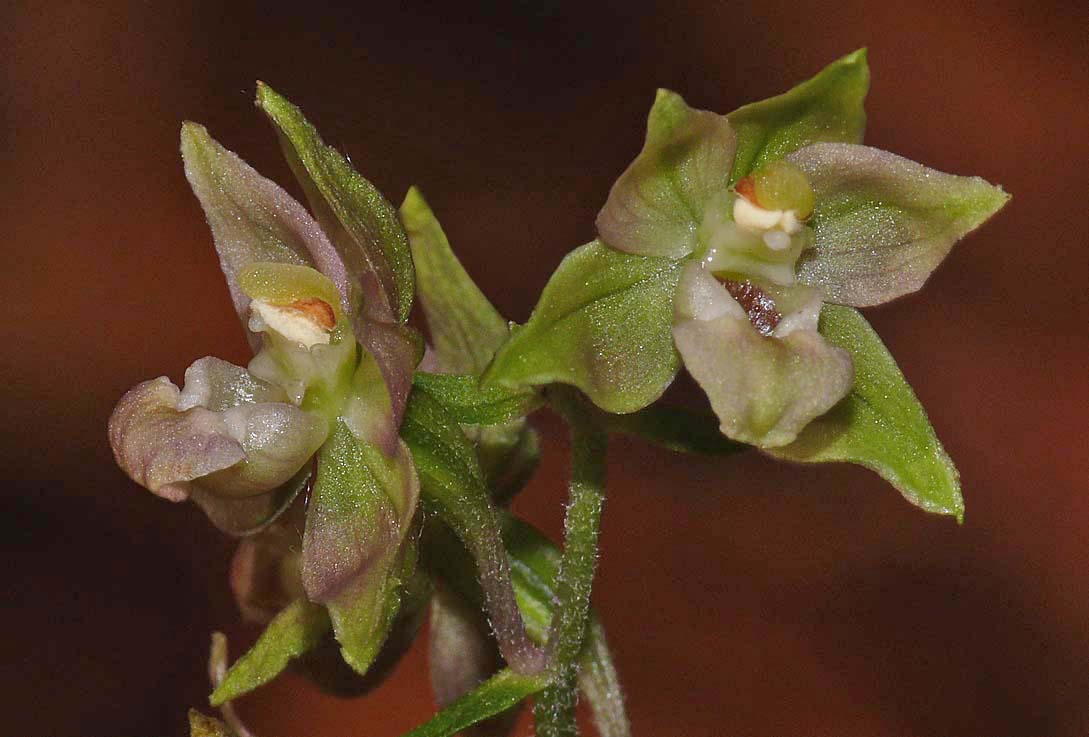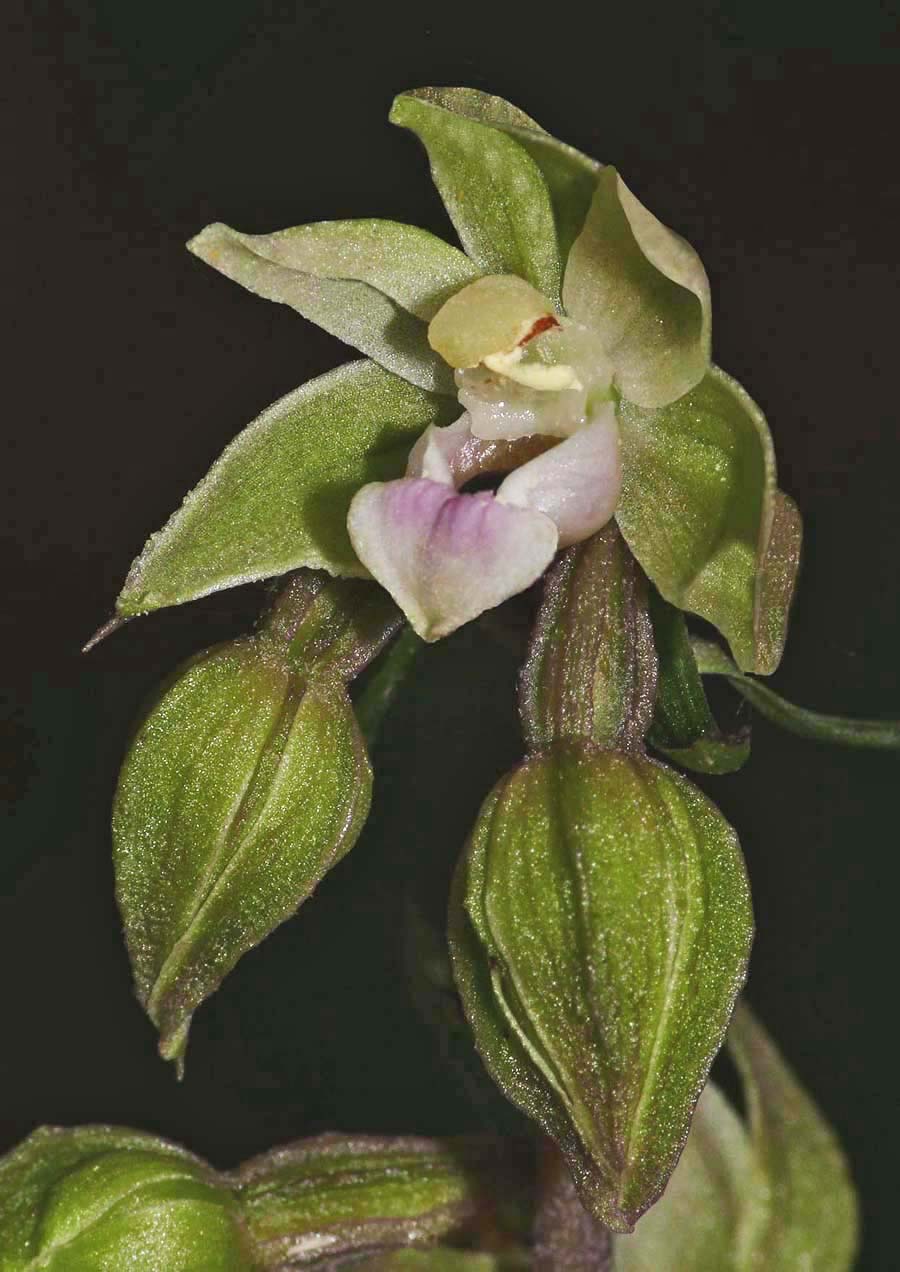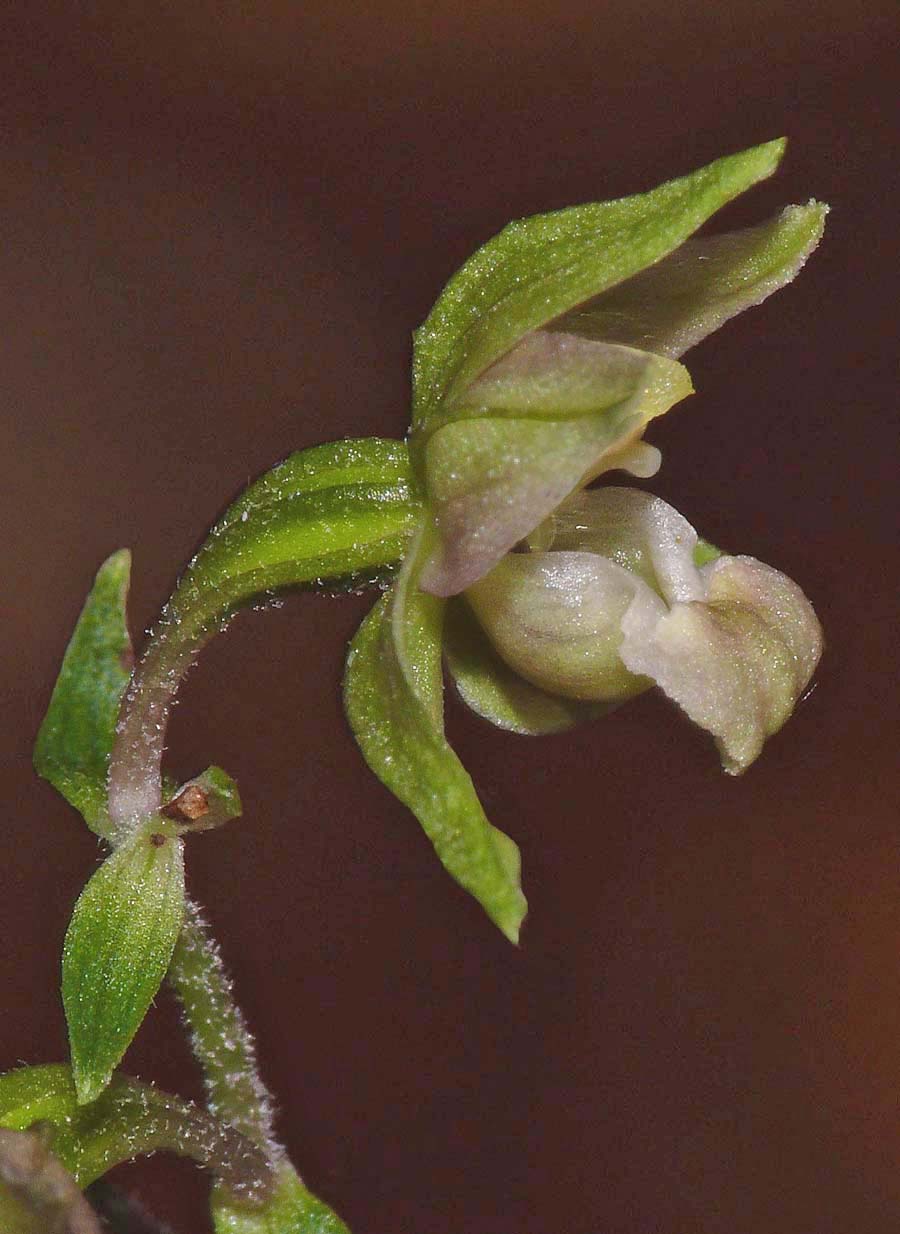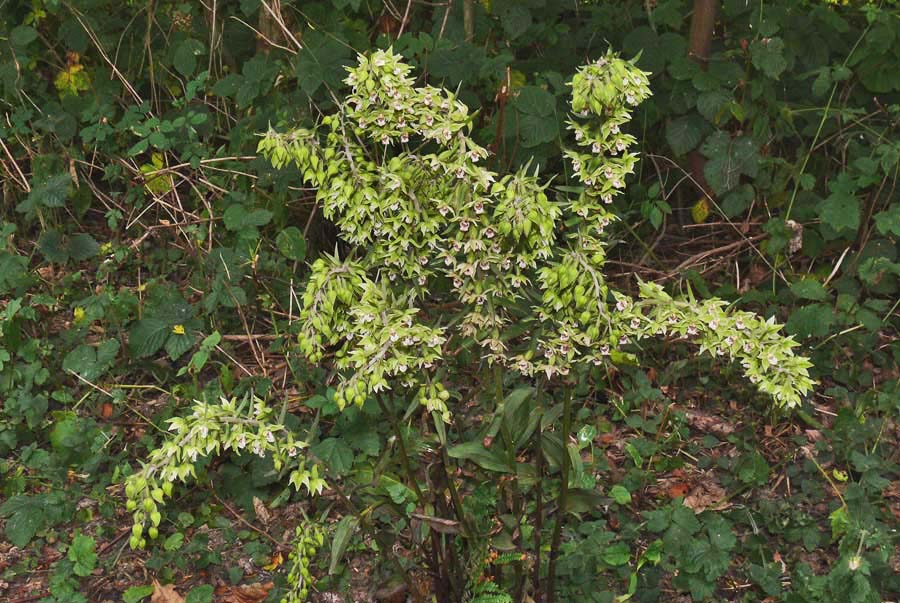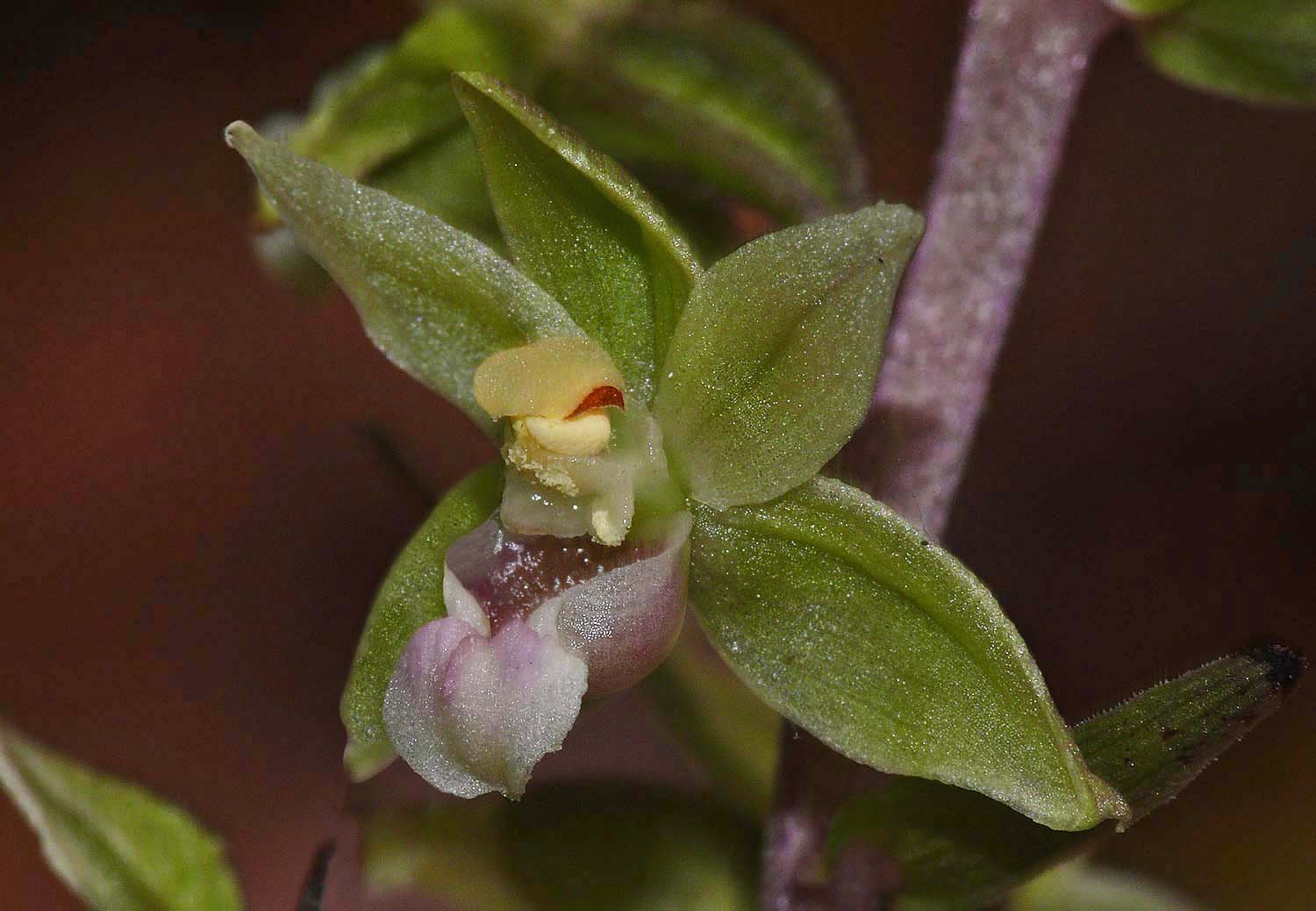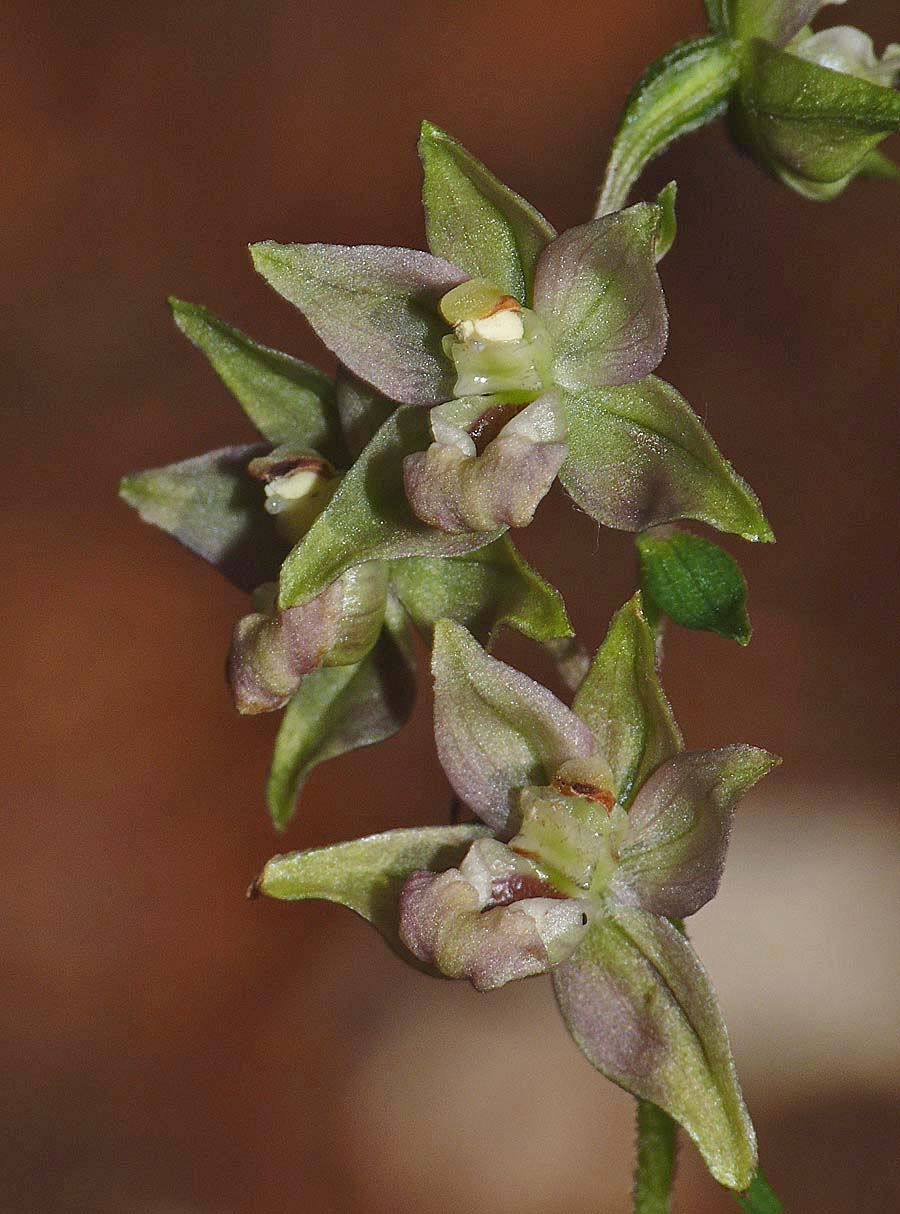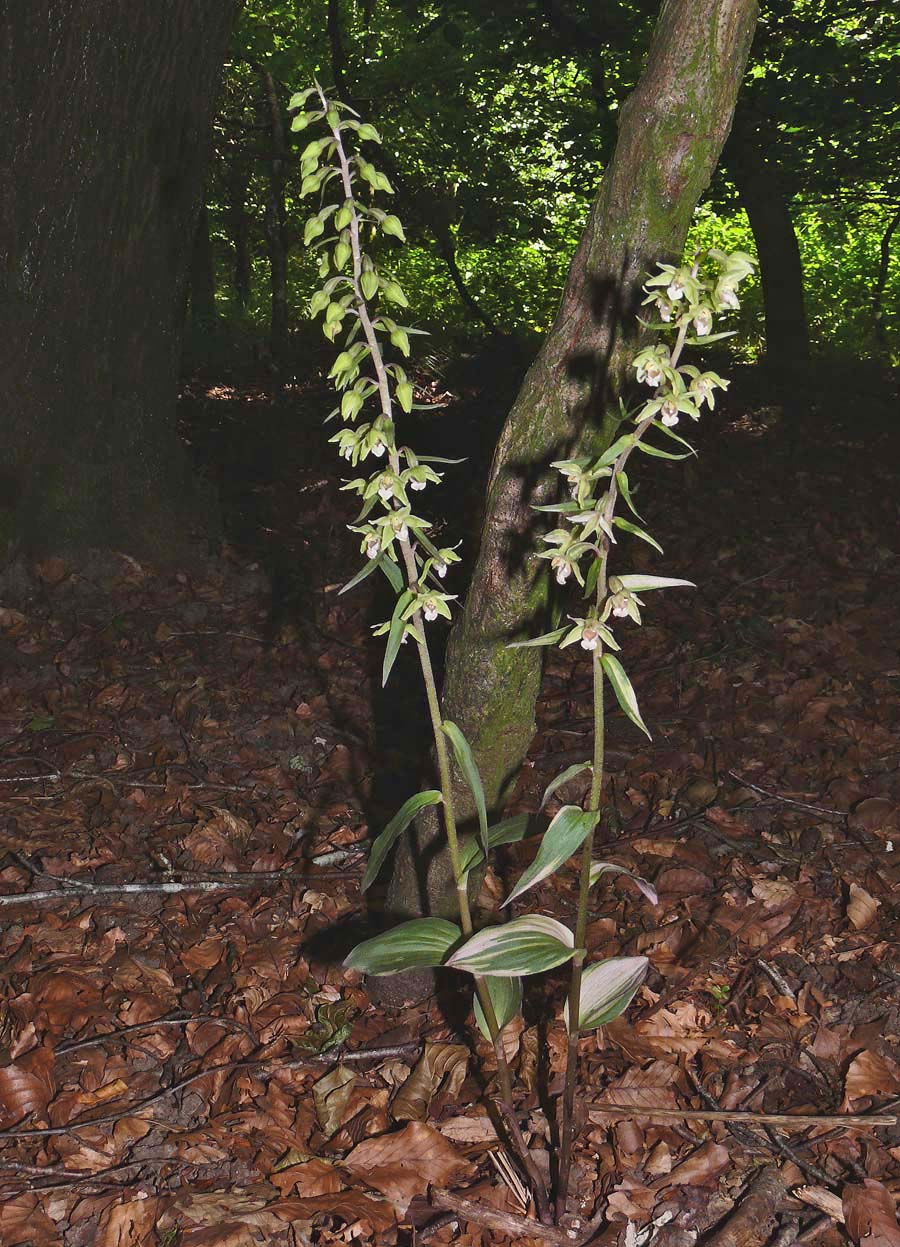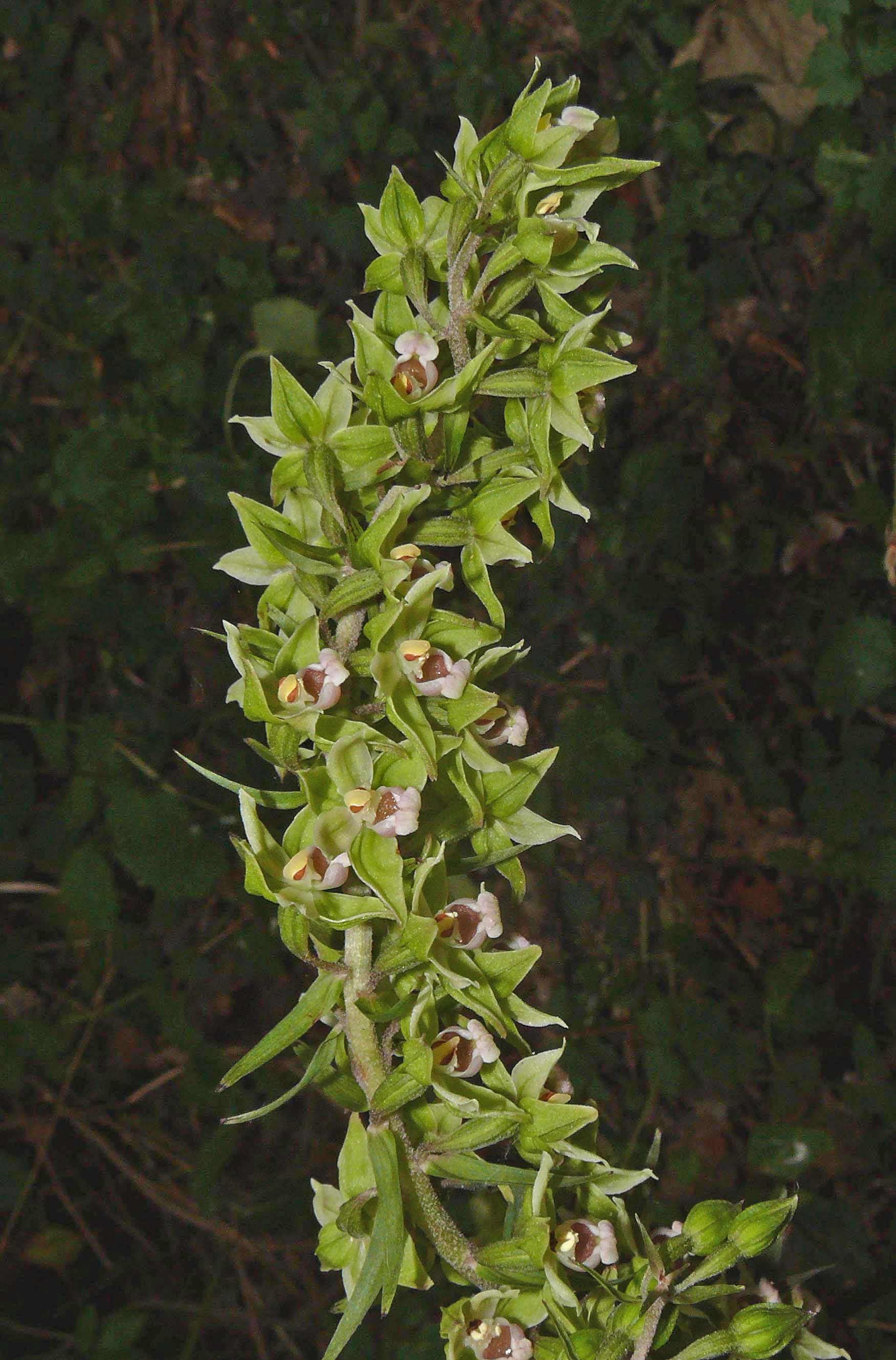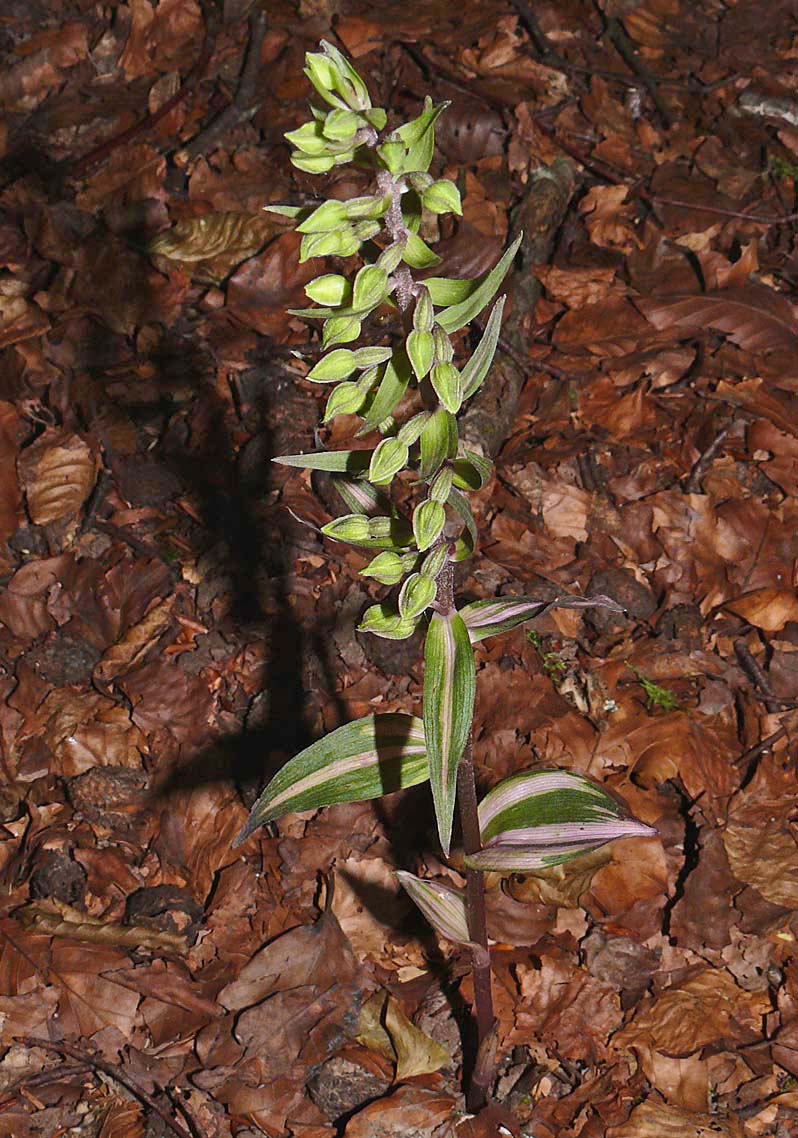E. purpurata
was first described from the Hartz massif, Germany by J. E. Smith in
1814
and its name refers to the purple complexion of the stem and
foliage. The purple tones exhibited by this species is further
referenced in its widely used common name, the Violet Helleborine.
In reality neither purple or violet really characterize the species, as the overall impression of the mature plant is one of olive grey. Whilst a degree of purple colouration can be present in this orchid, particularly in the stem, it's only plants growing in better than usual light conditions or specimens with chlorophyll deficiencies that really appear significantly tinged violet.
The rootstock of E. purpurata is extensive, penetrating up to a metre into the soil and forming a tangled mass of roots which in established plants, can produce a clump of up to a dozen stems. The perianth is widely spread and consequently the greenish, white flowers open fully, each containing a functional rostellum pollinated by small wasps. This species often shares habitat with E. helleborine but in pure populations the plants are easily separated by the differing leaf characteristics. In E. purpurata the leaves are both narrower and more widely spaced up the stem. This is one of the Epipactis species that appears more susceptible to chlorophyll deficiency and in some cases (var rosea) the plant takes on a completely saprophytic existence.
Pictures 10 and 12 depict interesting examples from east Dorset (England) which exhibit an unusual leaf variegation. This population is also notable as its thought to be one of the most westerly colonies in Europe. Alas however and despite growing in a Dorset Wildlife Trust reserve, the plants are in steep decline due to suffocation by rank vegetation.
In reality neither purple or violet really characterize the species, as the overall impression of the mature plant is one of olive grey. Whilst a degree of purple colouration can be present in this orchid, particularly in the stem, it's only plants growing in better than usual light conditions or specimens with chlorophyll deficiencies that really appear significantly tinged violet.
The rootstock of E. purpurata is extensive, penetrating up to a metre into the soil and forming a tangled mass of roots which in established plants, can produce a clump of up to a dozen stems. The perianth is widely spread and consequently the greenish, white flowers open fully, each containing a functional rostellum pollinated by small wasps. This species often shares habitat with E. helleborine but in pure populations the plants are easily separated by the differing leaf characteristics. In E. purpurata the leaves are both narrower and more widely spaced up the stem. This is one of the Epipactis species that appears more susceptible to chlorophyll deficiency and in some cases (var rosea) the plant takes on a completely saprophytic existence.
Pictures 10 and 12 depict interesting examples from east Dorset (England) which exhibit an unusual leaf variegation. This population is also notable as its thought to be one of the most westerly colonies in Europe. Alas however and despite growing in a Dorset Wildlife Trust reserve, the plants are in steep decline due to suffocation by rank vegetation.
